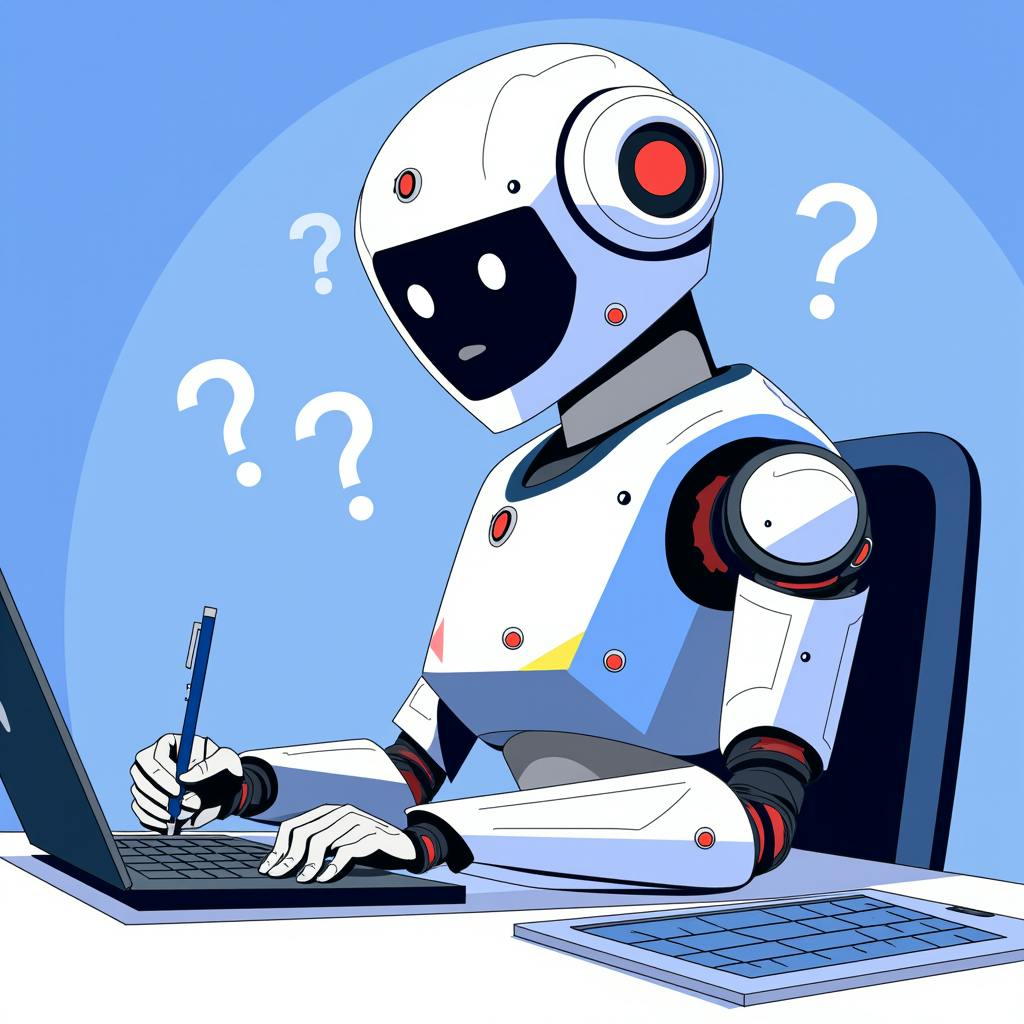In recent years, AI writing has become increasingly popular among businesses and content creators. Yet, despite its growing prevalence, AI writing isn't without its blunders. Common mistakes of AI writing include everything from producing generic content to misunderstanding context and nuance. These AI writing errors can undermine the quality of the content, leaving audiences dissatisfied and potentially harming the creator's credibility. This article will explore these common pitfalls in machine-generated text, helping you to navigate the challenges with AI-generated writing and improve your automated content creation.
Clarity in AI-Generated Text
One key to avoiding mistakes in automated content creation is ensuring clarity. AI often struggles with context, which can lead to text that, while grammatically correct, might lack depth or relevance. This issue arises because AI lacks the human experience needed to understand complex topics fully. For instance, an AI might generate a text about "jaguar" that mixes up the animal with the luxury car brand, if not specifically guided otherwise. Providing detailed prompts and thorough context can minimize such AI content quality issues.
Frequently Asked Questions
How can I improve the clarity of AI writing?
To enhance clarity, it's crucial to offer detailed instructions to the AI. Be specific about the subject matter, tone, and style you desire. Experimenting with different prompt phrasings can also yield better results.
Conciseness Over Quantity
Another common pitfall in machine-generated content is verbosity without substance. AI systems sometimes produce long passages that do not necessarily add value. This can occur when AIs prioritize length over content quality. Readers today prefer concise, impactful information over a sea of redundant text. Ensuring conciseness involves setting strict word limits and guiding the AI to focus on critical points rather than superfluous details.
How can I ensure AI-generated content is concise?
Before you initiate the writing process, establish clear guidelines on the length and focus of the content. Test shorter prompts that emphasize precision over redundant elaboration.
Compelling Content that Engages
While AI can quickly generate content, keeping it engaging poses a challenge. AI might produce text that reads as lifeless or generic without real engagement. This lack of creativity stems from AI's reliance on existing data rather than original thought. Including anecdotal elements or specific examples can help make AI-generated writing more engaging and relatable for readers.

AI made with Rita Lux
How do I make AI-generated content more compelling?
Look for ways to inject human interest elements, such as stories or real-life examples. Adjust the style and tone to fit your target audience's preferences, making the content more relatable and effective.
Credibility in AI Writing
Credibility is crucial in any content, but AI writing presents unique challenges. As AI can access an extensive range of data, it might aggregate information that includes outdated or incorrect facts. This raises questions about the authenticity and reliability of AI-generated writing. It is the responsibility of the editor or creator to fact-check and validate AI content before publication thoroughly.
How can I ensure AI-generated content is credible?
Always cross-reference the information provided by AI with reliable sources. Supplementing AI-generated content with human verification can significantly enhance credibility.
FAQ: Common Mistakes in AI Writing
AI writing is a powerful tool that can drastically enhance content creation processes. However, certain pitfalls can undermine the quality and effectiveness of AI-generated content. This FAQ addresses common mistakes in AI writing and offers guidance on avoiding them to ensure high-quality outcomes.
What are some common mistakes in AI writing that should be avoided?
1. Over-reliance on AI Tools:
- Mistake: Using AI as the sole creator without human input can lead to generic, off-brand, or contextually inappropriate content.
- Consequence: Content may lack originality and voice, failing to engage readers effectively.
2. Lack of Clear Instructions:
- Mistake: Providing vague or incomplete prompts to AI systems can result in outputs that do not meet content goals.
- Consequence: Misaligned outputs that require extensive editing or are unusable.
3. Ignoring Ethical and Bias Concerns:
- Mistake: Failing to scrutinize AI-generated content for potential bias or misinformation.
- Consequence: Unintentional spread of biased views or inaccurate information.
4. Neglecting to Fact-Check:
- Mistake: Assuming AI outputs are accurate and factual without verification.
- Consequence: Dissemination of incorrect or misleading information.
5. Forgetting SEO Considerations:
- Mistake: Not optimizing AI-generated content for search engines.
- Consequence: Reduced visibility and reach of content.
How can I avoid making common mistakes in AI writing?
- Maintain Human Oversight: Always review and edit AI-generated content. Ensure it aligns with your brand voice and meets quality standards.
- Craft Specific Prompts: Provide detailed instructions to guide AI systems effectively, specifying tone, style, and content requirements.
- Regularly Review for Bias: Train AI models with diverse datasets and conduct thorough reviews to mitigate biased outputs.
- Fact-Check Rigorously: Verify all factual aspects in AI-created content with reliable sources before publication.
- Incorporate SEO Best Practices: Use relevant keywords and optimize meta tags and structure to enhance search engine visibility.

AI made with Rita Lux
Why is it important to avoid common mistakes in AI writing?
Avoiding common mistakes is crucial to ensure that AI-generated content is effective, reliable, and reflective of your brand values. Proper utilization of AI can lead to efficient content creation, but without adequate oversight, the risks include damage to credibility, negative audience engagement, and potential brand harm.
Which common AI writing mistakes can have a negative impact on content quality?
- Generic Content: Lack of uniqueness or depth, leading to disengaged readers.
- Inconsistencies in Tone and Language: Distracts and confuses the audience, diluting the message.
- Misinformation: Damages trust and authority.
- Bias: Alienates segments of your audience and may lead to reputational damage.
- Poor SEO: Limits content reach and return on investment.
Conclusion
In the evolving landscape of content creation, understanding the challenges with AI-generated writing is essential for producing high-quality material. Avoiding common mistakes of AI writing—such as lack of clarity, verbosity, uninspired content, and credibility issues—requires vigilance and strategic guidance. By providing clear instructions, maintaining conciseness, adding engaging details, and ensuring factual accuracy, you can maximize the potential of AI while minimizing content quality issues. As AI continues to advance, staying informed and adaptive will help content creators harness its power effectively.

